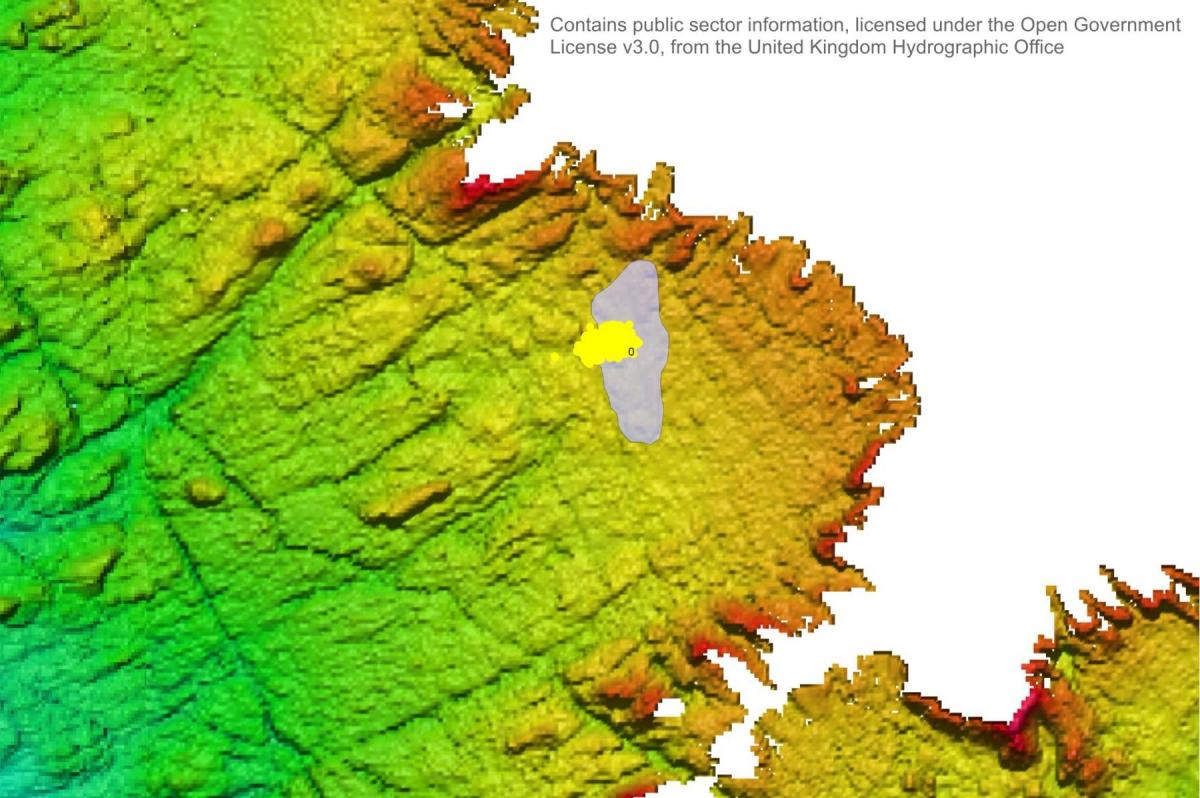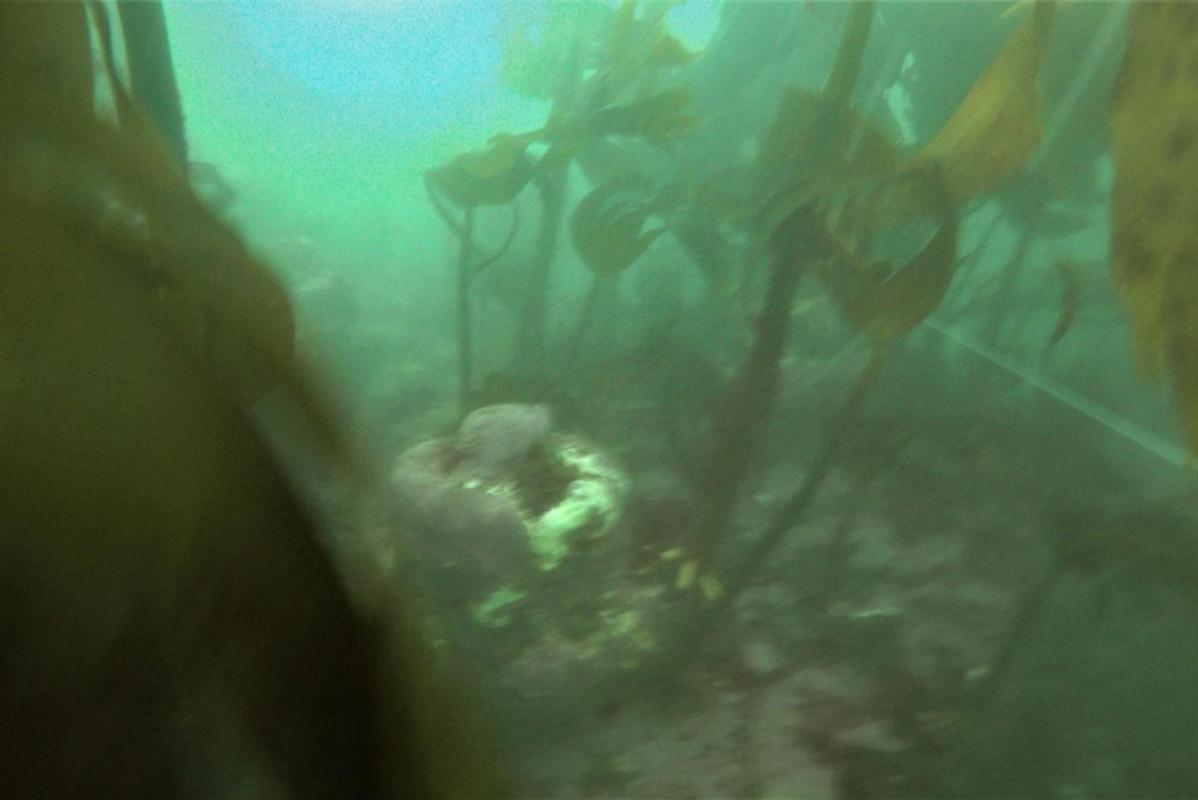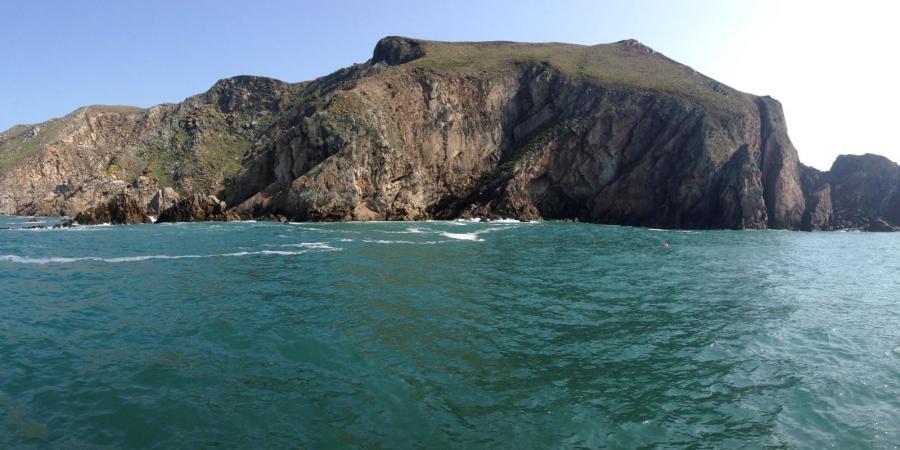The weather gods favoured us over the weekend and allowed the Wessex Archaeology team to dive the Montagu pre-dreadnought battleship wreck site. Although the force of the persistent swell waves from the west made for very uncomfortable diving, dragging us backwards and forwards through the kelp, the Historic England site survey was started. Underwater visibility was only about one metre, making for difficult navigation underwater, so we used acoustic tracking to help guide the divers and record the position of the wreckage that they found (you’ll appreciate that the magnetic compasses that divers usually carry don’t work very well in the middle of the wreck of a steel ship).
You can see the area we succeeded in searching in the bathymetric image of the seabed I’ve posted with this update. The light blue shape in the centre is the area of wreckage that our marine geophysicist Dave Howell predicted from analysing the geophysical survey data received from the UKHO. North is up. The yellow area is the area surveyed today as recorded by the tracking system. So far, Dave’s analysis seems to have been very accurate, with wreckage found within the predicted area, but petering out just outside it.
We’ve found several large armour plates lying on the seabed. The Montagu had armoured sides, bulkheads, decks and barbettes. It’s probably side armour but we can’t be sure until we’ve had the chance to measure its thickness. According to the specifications issued to the builders of Duncan class battleships, they had ‘Harveyed’ armour. Harvey armour, made of nickel-steel was extremely hard on the exterior face as a result of extra carbon or nitrogen being added during manufacturing. There was a naval arms race in the late Victorian period and it was introduced in the early 1890s as a way of protecting armoured warships against increasingly powerful naval guns. However, we think that the Montagu, launched in 1901, was actually fitted with Krupp armour, which had been introduced in the late 1890s. By using a better method of adding carbon and also by adding chromium to the nickel-steel, Krupp armour was even harder.


You can see in the very low resolution video still I’ve posted one of the interesting objects seen on Saturday. The video was shot as I pushed through the kelp. Although we haven’t yet examined it and similar objects closely, they appear to be bolts that secured the armour plate to the side of the ship. The specifications required ‘bolts with sleeves, ferrules, cups and plate washers’ to be used and this object looks very like one of them. Heavy armour plating required equally heavy bolts to attach it to the ship and these went through the wooden backing of the armour. Bolts like this didn’t go all the way through the armour, as this would have weakened it. Instead they were tapped (screwed) into the back of the plates.
